8 Ways to Generate and Nurture Leads Through Marketing Automation


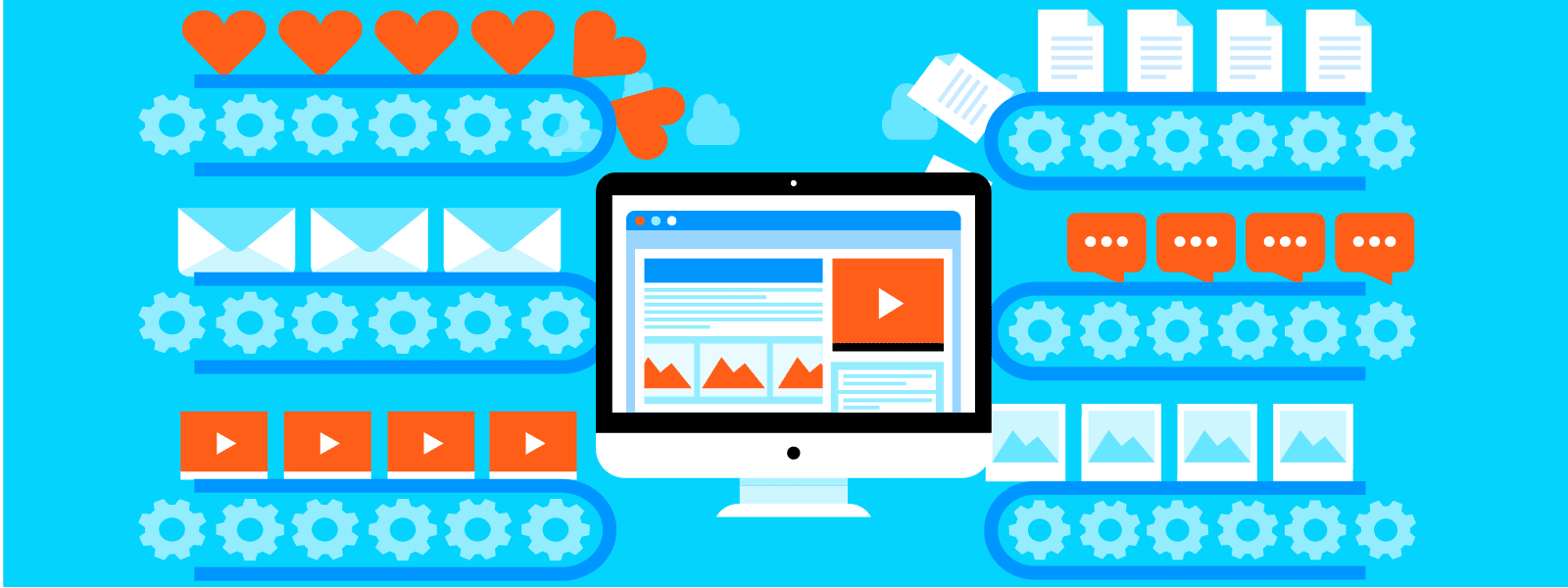
The consumer journey has grown complex. Forget the see-negotiate-buy approach. The way companies generate leads has also changed massively in the past few years. Customers no longer appreciate random calls offering products and services.
Marketers can no longer afford to cast a wide net and hope for the best. Instead, they must generate high-quality leads that lead to conversions.
As your company grows, it becomes challenging to generate enough quality leads to sustain that growth. Data shows that 65 percent of marketers have a hard time generating leads and traffic.
Thankfully, technology is changing marketing, and there are tools you can use to generate and nurture leads effectively. Tools that align the marketing and sales department, so that the leads that are passed on are sales-ready.
The number of marketing channels has also increased, and the customer expects marketers to be available on the same channels as they are. For a company to grow, it must keep track of customer activities and provide efficient service on all platforms.
To attract, convert, and retain customers, marketers use different methods, including content marketing, social media, email marketing, advertising, and SEO. Each of these channels has specific software that help marketers manage multiple campaigns on multiple channels without losing their minds.
However, using data from different channels may not give you a comprehensive view of each customer. It becomes hard to control the lead generation process.
Marketing automation is the tool most savvy marketers are using to automate their marketing and lead generation processes.
It unifies the lead generation process and allows you to be in control of lead generation, thus, nurturing conversion and retention. Today, 75 percent of marketers are using at least one marketing automation software.
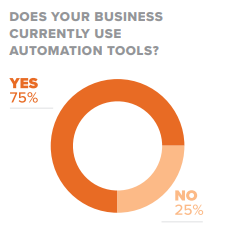
Image Source: Social Media Today
Marketing automation software help companies effectively manage campaigns and drive valuable insights from them. Numerous surveys have shown that it increases leads while helping marketers measure the results of their campaigns.
Marketers, business owners, and executives say that the biggest benefits from marketing automation include saving time at 30 percent, lead generation at 22 percent, and increased revenue at 17 percent.
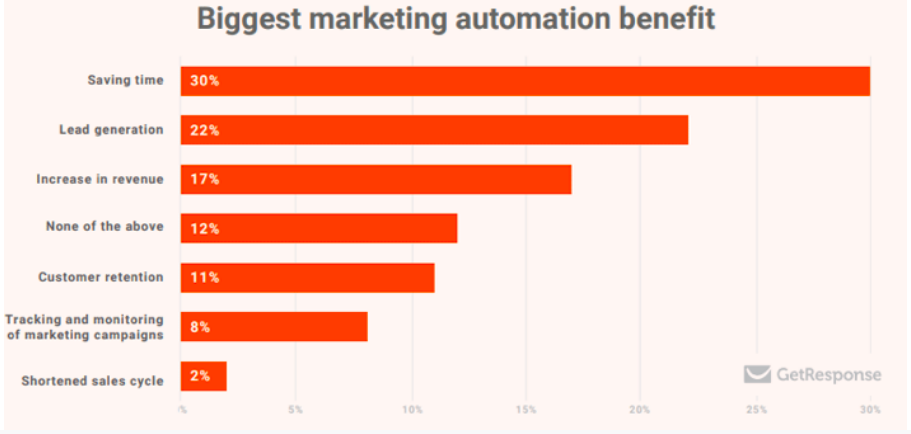
Image Source: Get Response
Investing in marketing automation software allows you to generate sales-worthy leads, leading to higher conversions and retention rates.
Another benefit of using marketing automation is increased efficiency. Automation allows you to personalize interactions with individual customers.
You can send them relevant content at the right time based on their preferences, previous history, and needs. You are also available for them across channels. You keep leads engaged throughout the conversion funnel and push them along to make a conversion.
However, according to the statistics mentioned above, 25 percent of marketers are yet to adopt marketing automation. This article explores ways to use automation to generate high-quality leads and how to do it right.
How to Use Marketing Automation to Generate Leads
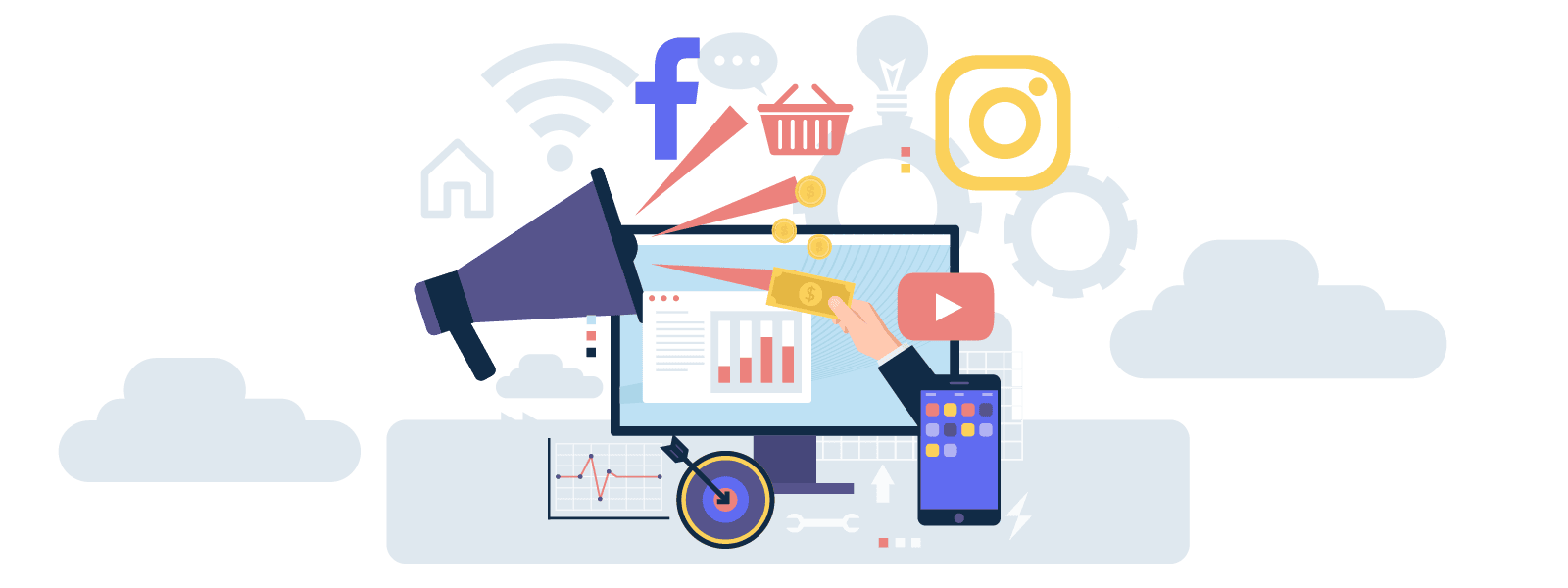
1. Your landing pages
The landing page is the entry point to your website. It offers your customer the first impression of your website and brand.
Your customers can land on these pages from PPC ads, email campaigns, triggered emails, and more. They can be sales pages, or they can host gated content. Either way, they are a great lead generation tool, especially when coupled with the right automated services (like email campaigns).
But all the automation in the world is useless if the landing page isn’t properly written and optimized.
When the customer provides their information in exchange for educational content, they indicate interest in one of your products or services.
A lead generation landing page should offer customers a smooth experience. It should present the customer with intriguing content that is relevant to what they want. It involves the use of:
Remember that your home page is not your landing page. The homepage is where you showcase all you do. Your visitors spend time on the home page, trying to find what they need.
A home page also has many distractions and irrelevant information for a client who is seeking a specific product or service. The landing page, however, has one product or service that caught the prospect’s interest.
The landing page is important for lead generation because it allows you to segment customers based on the information collected. It also provides you with insights on audiences interested in your products or services. The information collected allows you to run effective email campaigns and gain powerful sales intelligence.
Marketing automation comes into play several times here. For starters, you can use insights from previous campaigns to create a compelling landing page. Then, the collected contact forms should be automatically sent to your CRM. Next, triggered emails help you keep the momentum with the people who left their information.
Finally, marketing automation can be used to send pre-set email campaigns or targeted ads.
Depending on how specific your landing page is, you can tell at what stage of the purchase funnel the consumer is, which helps you better segment them. With this information, you can repurpose blog content and use drip campaigns to target everyone depending on the funnel stage and interest.
Information you gather may lead to the creation of more landing pages as you try to meet customer needs. Think about what they need next after downloading or purchasing?
Let’s say you run a website that offers online courses. If a student downloads a certain guide, what will they need next? A more in-depth course? An evaluation form? A new course on a complementary subject?
Provide it, and you have more conversion opportunities. When you use landing pages to collect email subscribers, you increase conversions by up to 50 percent.
2. Email drip campaigns
An automated landing page triggers auto-responder emails aimed at following up on interactions with the customer. Email drip campaigns allow marketers to send emails at specific intervals in a bid to nurture leads.
Most marketing automation solutions have powerful segmentation capabilities based on sales funnel position, channel, industry, and other factors.
Segmentation allows you to provide relevant content in each email and guide the buyer’s journey. Supplying useful resources and information leads to top-of-mind recall and trust from customers.
Auto-responder emails also have a high open and click-through rate, just like triggered emails. They are immediate and relevant, provide context, and get triggered by subscriber behavior.
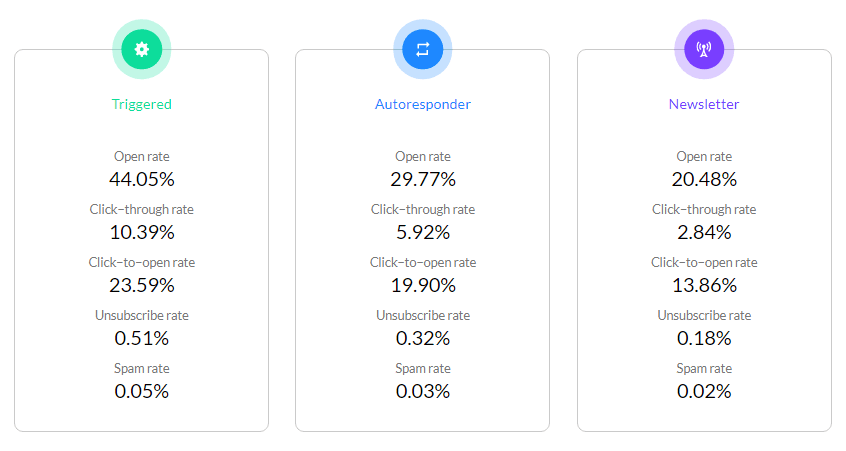
Image Source: Get Response
People are more likely to open an email right after they take action on your website. They are also likely to read it and respond to it. Automation allows you to collect data that you can use to send personalized and actionable content.
For your drip campaigns to work:
If done right, drip campaigns help you spend less time pitching and more time nurturing and closing deals. You will have a continuous supply of leads ready to convert. The campaigns make your marketing efforts more effective and increase sales.
3. Sales and marketing collaboration
Traditionally, the marketing team used different tactics to generate leads, including advertising and email marketing. They would then pass these leads to the sales team who would nurture the leads and turn them into customers.
However, the quality of leads passed on is not always ideal, and most of them are not sales-ready. Problems appear as each of these teams blames the other instead of working together to convert leads to customers.
Automation helps both teams score leads through a process known as lead scoring. It adds or subtracts points based on actions performed or not performed by the customer. When they reach a certain threshold agreed upon by both teams, then the lead is passed on to the sales team.
With lead scoring, you avoid losing lead opportunities. By the time the rep receives the leads, they are ready to purchase or convert. Lead scoring helps them know what leads to prioritize and how to handle each lead, leading to increased conversion rates.
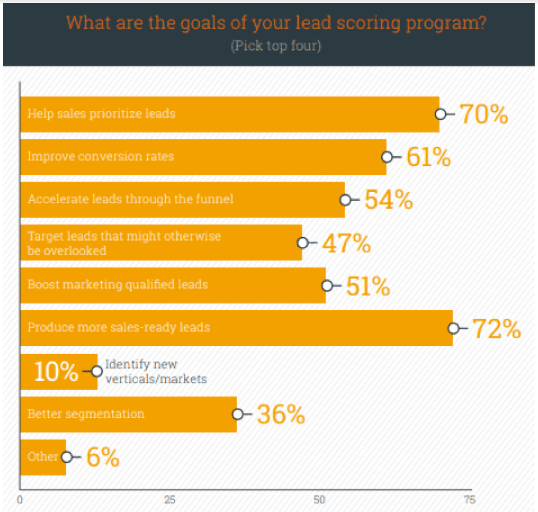
Image Source: Demand Generation
According to the same research, 76 percent of marketers have an automated lead scoring system, but only 17 percent consider it effective. Lack of collaborations between the sales and marketing team can lead to ineffective lead scoring systems.
The sales and marketing team must align their goals towards defined common processes, metrics, and definitions. They must agree on what makes a lead sales-ready, which means they need to collaborate in defining the metrics and sticking to them.
Other causes of an ineffective lead scoring campaign include lack of adequate data, lack of resources, lack of time, lack of best practice insights, and misleading information.
Lead scoring has huge benefits if executed effectively with the biggest payoff being prioritized leads.
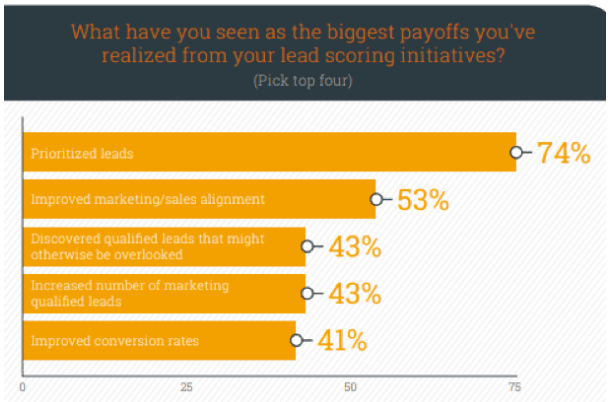
Image Source: Demand Generation
With lead scoring, the sales team can also choose what leads to follow up on based on data. The marketing team can also nurture leads that the sales team cannot reach.
The marketing automation platform syncs easily with your preferred CRM. The integration leads to an easy flow of communication between the systems. Both teams can then tell when a prospect is ready to be nurtured and when they are ready to purchase.
The two teams generate more leads and conversions increase since no lead is lost.
4. Follow up/Nurture
After the sales team receives sales-ready leads, they need the right information to follow up. Does your sales team follow up with those who show interest but don’t buy right away?
Studies show that 62 percent of leads do not get followed up, while 90 percent of companies do not acknowledge customer requests.
Your ability to turn a lead into a paying customer will depend on your follow up tactics. Any wasted opportunity will lead them to a competitor’s site. Make your leads feel valued and that you appreciate their business. Failure to do this, and they will take their business elsewhere.
Use automation to give them fast services. Speedy responses will build trust while slow responses will lead to loss of customers and revenue. Your CRM can help you check up and follow up on leads, automate the lead nurturing campaigns, and use call scheduling.
Marketing automation allows you to move leads seamlessly from:
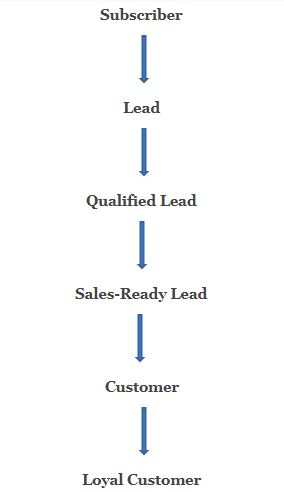
If you play your cards right, then you turn your customer to a brand ambassador.
Use relevant materials to guide your audience through the purchase funnel. Start by defining buyer personas and segmenting them depending on demographics, needs, history, and interests. Segmenting will help you identify what might be interesting to each customer and how to develop their content to make it informative and engaging.
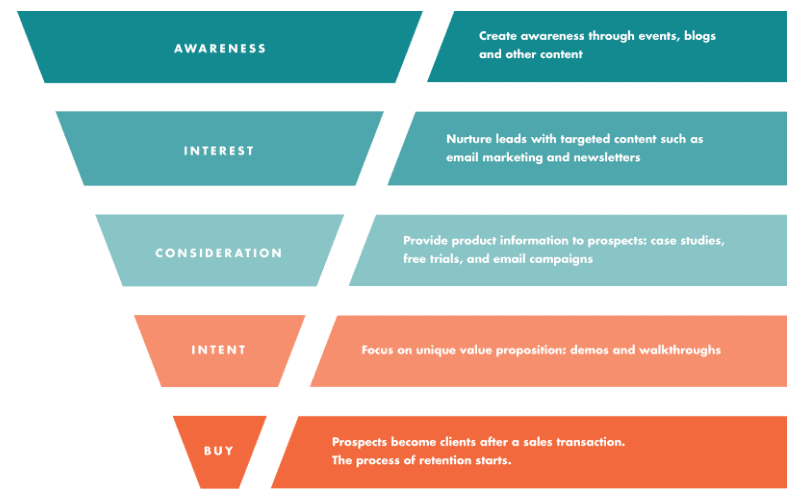
Image Source: MOZ
Marketing automation is probably the best way to nurture leads. With it you can:
5. Integration of marketing solutions
Marketing automation is great. But when you integrate various tools, it becomes unstoppable. Integration allows you to control your marketing efforts from one platform instead of dealing with data across marketing platforms.
When your marketing automation software integrates well with other software, you can deliver fast, gather information effectively, and gain actionable insights for better decision making.
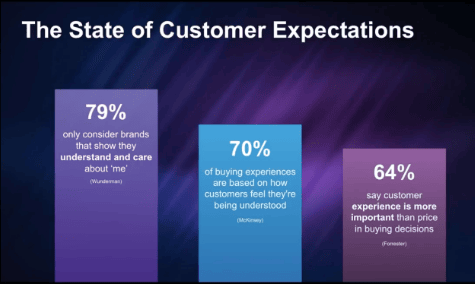
Image Source: Market 2 Marketers
The unique platform becomes the collection point for all data and information from all your marketing channels.
For example, a client may not reply to your emails but respond on social media. Thus, even though they did not acknowledge your email, you can reach out to them via social media. You gain such insights when you integrate your marketing software so that you can segment and reach out to customers better.
Integration platforms allow you to get the right insights for informed decision making since there is a seamless exchange of information between the different channels.
6. Chatbots
According to statistics:
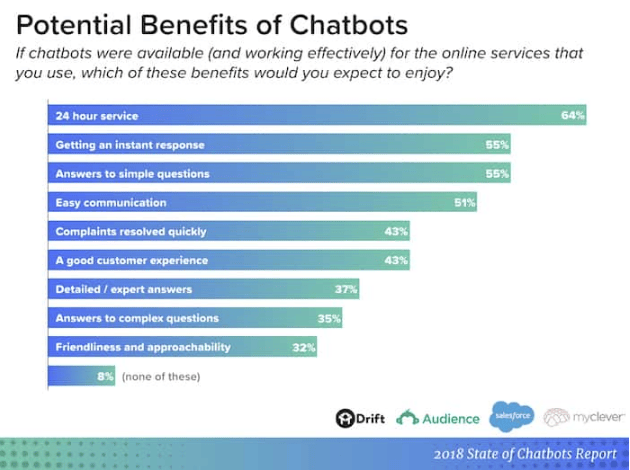
Image Source: Drift
Implementing chatbots allow your business to be available to your customers 24/7. It also boosts your brand image, allows you to offer better experiences, and increases lead generation.
Introduce chatbots to some of your other marketing platforms, like social media and website.
7. Personalization
According to research by Salesforce, 58 percent consider personalization important when purchasing from a company. Fifty-two percent will switch brands if communication is not personalized.
Fifty-seven percent are willing to share their data to get personalized offers. They will also share their data to get personalized shopping experiences (53 percent) and personalized recommendations (52 percent).
In another study, Deloitte found that consumers don’t just want a personalized experience. They want personalized products and services. Forty-eight percent were willing to wait longer to get them while a majority were willing to pay more for personalized products and services.
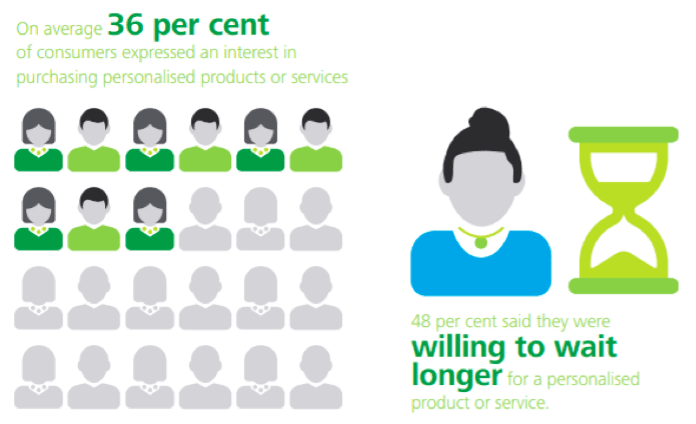
Image Source: Deloitte
Personalization is therefore important as a marketing strategy, but it only becomes effective if you segment your customers the right way. Your emails or recommendations need to touch on customer’s pain points. Otherwise, it will be sent to spam or discarded.
Marketing automation makes it possible for you to offer customers personalized experiences. Use it to get individual customer data from their profiles and display information to them depending on their interests, needs, and history. For example:
8. A/B testing
A/B testing or split testing allows you to compare two versions of something to know which one works best. For example, a landing page, a marketing email, a social post, or a display ad. Half of the audience sees one version, and the other half sees another.
Compare the performance of the two based on a set conversion goal. For example, how many people completed form A or downloaded, or how many made a purchase from landing page B or clicked a link.
A/B testing allows you to offer more relevant communication to your target audience. It allows you to personalize marketing campaigns. With A/B testing, you can measure how much time the different customers spend on a site, bounce rates, and which version of your page or email led to more sales.
Beyond testing, marketing automation reports help you calculate cost per lead, current leads in the pipeline, and cost per opportunity. It allows you to see where you are getting your most valuable leads from and where you need to put in more effort.
Conclusion

It’s important to remember that marketing automation will also require your input. You will still need to write compelling content, build workflows, craft campaigns, and design templates. Marketing automation is a tool that makes your marketing efforts better, but you have to do the groundwork.
Once you launch the campaigns, you need to analyze results and continually tweak messages based on your A/B testing results. Use the data collected to increase leads and customer experience. You need to change or improve your call-to-actions and provide better offers that lead to better outcomes.
When working with a marketing automation software, you can define who a qualified lead is, how best to target them, and how to nurture them through the purchase funnel.
It allows you to seamlessly move your customer from the initial touchpoint, nurture them, and after they purchase, retain them as loyal customers. It makes your marketing efforts successful and more effective by continuously working in the background to generate excellent results.
It allows you to deliver highly relevant, engaging, and personalized content to questions leads need answered even before they ask. It uses previous interactions the customer has had with your marketing channels and team.
These interactions then allow your company to generate qualified leads at a lower cost. Use it too to engage prospects and existing customers to boost retention and increase purchases.
The benefits of marketing automation are numerous if you do it right. From increasing customer engagement, leads, nurturing those leads, personalization, and many more. If you’ve not yet implemented marketing automation for your company, now is the time.